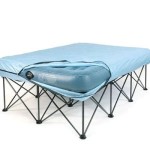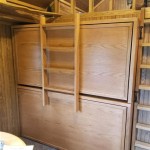When Should You Switch a Baby to a Toddler Bed?
The transition from a crib to a toddler bed is a significant milestone in a child's life, signifying their growing independence and evolving needs. This transition often occurs between 18 months and 3 years of age, but the ideal timing depends on a variety of factors. This article will explore key considerations for making this transition, ultimately aiming to provide guidance to parents seeking the right time to switch their baby to a toddler bed.
Factors to Consider for the Transition
The optimal time for a baby to transition to a toddler bed is determined by a blend of the child's developmental stage and the parents' preparedness. Here are some essential factors to consider:
1. Physical Development and Mobility
A child's physical development plays a crucial role in the transition. By 18 months, most toddlers demonstrate increased mobility, climbing out of cribs with ease. This ability, while showcasing their growing independence, also signifies the need for a safer sleeping environment, hence the transition to a toddler bed. This transition ensures their safety and prevents accidental falls or injuries.
2. Cognitive Development and Understanding
A child's cognitive development dictates their understanding of transitioning to a new sleep environment. Toddlers who can understand and follow simple instructions are better equipped to adjust to the change. For instance, a child capable of understanding the concept of "staying in bed" and recognizing their own room is likely more prepared for a toddler bed.
3. Sleep Patterns and Behaviors
Sleep patterns and behaviors are significant indicators of a child's readiness for a toddler bed. If a child consistently sleeps through the night without waking or needing parental intervention, their sleep routine is likely established, making the transition smoother. Conversely, if a child experiences frequent night wakings or struggles with bedtime, the transition may be more challenging.
4. Parental Readiness and Support
Parental readiness and support are crucial for the success of the transition. Parents need to be prepared for potential challenges and setbacks. This may involve adjusting bedtime routines, providing reassurance, and remaining patient with the child during the transition. It is important to approach this transition with patience and a positive attitude, creating a supportive environment to encourage the child's independence.
Signs of Readiness for a Toddler Bed
Several signs can indicate a child's readiness for a toddler bed:
1. Showing Interest in a Toddler Bed
If a child expresses curiosity or interest in a toddler bed, it signals a readiness for the transition. This interest could be demonstrated through playing in the bed, asking about it, or wanting to sleep in it.
2. Climbing Out of the Crib
Consistently climbing out of the crib, demonstrating a desire for more freedom and space. This behavior suggests that the crib is no longer confining enough, making a toddler bed a more suitable option.
3. Demonstrating Independence
Exhibiting independence in other areas of life, such as getting dressed or feeding themselves. This maturity indicates a willingness to take on new challenges, including transitioning to a new sleep environment.
Tips for Making the Transition Smooth
A smooth transition to a toddler bed requires careful planning and execution. Here are some tips to ensure a successful transition:
1. Gradual Introduction
A gradual introduction to the toddler bed is crucial for a smooth transition. Start by allowing your child to play in the bed, spend time in the room, or even just look at the bed. This gradual exposure helps the child become comfortable with the new environment.
2. Positive Reinforcement
Use positive reinforcement techniques to encourage your child to sleep in the toddler bed. Praise and rewards for successful nights in the bed can help motivate them to adapt to the change. Celebrate those small milestones and emphasize how proud you are of their progress.
3. Consistency and Routine
Maintain a consistent bedtime routine, even after transitioning to a toddler bed. A predictable schedule provides comfort and a sense of security, helping the child adjust to the new environment more easily.
4. Address Any Fears or Resistance
If your child experiences fears or resistance, address them with empathy and reassurance. Talk to them about their concerns, offer comfort and support, and explain that the toddler bed is a safe and comfortable place to sleep. Patience and understanding are key to overcoming any anxieties or apprehensions.
In conclusion, transitioning to a toddler bed is a gradual process that requires patience, understanding, and a supportive environment. By observing your child's developmental stage, considering their needs, and following the tips outlined above, you can help ensure a smooth and successful transition to a new chapter in their life.

When Should You Switch Your Toddler To A Bed Baby Earth

Signs Your Child Is Ready For A Toddler Bed And Tips On How To Make The Switch Socal Mommy Life

10 Best Tips For Transitioning From Crib To Bed Busy Toddler

Ultimate Guide To The Toddler Bed Transition Taking Cara Babies

When To Transition Toddler Bed Signs Your Child Is Ready

When To Transition From Toddler Bed Twin

When To Transition Toddler Bed Signs Your Child Is Ready

Crib To Toddler Bed Signs It S Time Switch Babycenter

Toddler Mattress Size Guide When To Make The Switch Pottery Barn Kids

When To Transition From A Crib Toddler Bed Huckleberry
Related Posts







